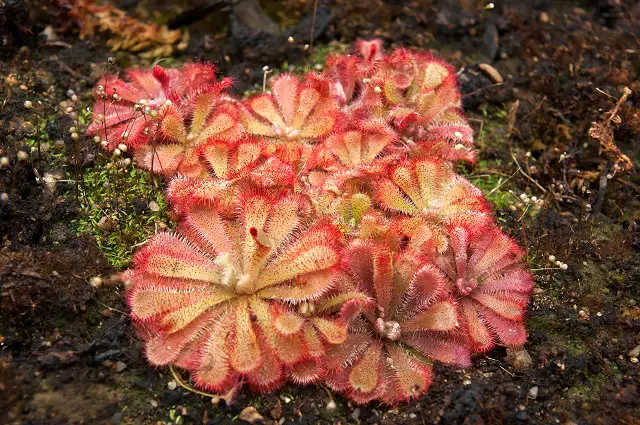Sundews are a type of carnivorous plant that trap and digest insects to extract nutrients. While generally safe, some species of sundew can produce small amounts of toxins that may cause skin irritation or stomach problems if ingested. For the most part, however, sundews are non-toxic and pose no serious health risks. However, just like any other plant, sundews can hurt you if you’re not careful. Some sundews have thorns or spines that can prick or scratch your skin. And, if you eat a sundew leaf, you may experience some stomach problems from the plant’s toxins. So, while sundews aren’t typically dangerous, it’s important to be aware of their potential hazards.
What happens if you touch a sundew?
Sundew plants aren’t technically poisonous, though. If you were to touch a sundew plant too often, you might experience irritation. Some people take sundew to treat various breathing problems such as bronchitis, asthma, whooping cough (pertussis), and cancer, but clinical studies have not supported these claims. Sundew is generally considered safe in the recommended amounts. Higher levels may cause gastrointestinal irritation in some people. Women who are pregnant or breastfeeding should avoid using sundew. If you have any questions or concerns, be sure to speak with your healthcare provider.
Can you eat Sundews?
Suppose you are curious about trying sundew yourself. While sundews are not poisonous, as mentioned above, they also do not have a lot of nutritional value, so they are not typically considered edible. Some people have reported eating sundews without any adverse effects. Still, it is not recommended, as there is no real evidence that they are safe to eat.
Sundew has been historically used in herbal medicine. Throughout Europe, a tea made from Sundews was recommended for coughs, bronchitis, asthma, and other chest and lung conditions, according to Johann Schroder. He wrote The Apothecary or a Treasure Chest of Valuable Medicines in 1685. In that case, it is best to consult a botanist or other expert before doing so. People mention the taste of sundews is similar to bitter dandelion tea, really not recommended for the pleasure of tasting.

About the Sundew
There are 194 species worldwide of this genus, one of the most diverse carnivorous plants in the world. They can be found on almost every continent. Sundews are easily recognizable by their sticky, dew-like droplets that coat the leaves and trap insects. They have leaves that are covered in glandular hairs that secrete sticky droplets of mucilage. These droplets trap and digest prey insects that land on the leaves. Some sundew species produce colorful flowers. Sundews are native to North America, South America, Europe, Asia, and Africa. Sundews have a variety of leaf shapes and sizes, depending on the species. Some species have tiny leaves, while others have large, wide leaves. They typically grow in moist environments, such as bogs or marshes. Still, some species can also be found in drier habitats. Sundews are popular for carnivorous plant enthusiasts due to their diverse range and easy care requirements.
Where to buy Sundew Plants
Sundews can be purchased at most nurseries. Make sure to find a reputable nursery or seller to ensure you get a healthy plant. You can also find sundews for sale online. If you’re looking to buy a sundew plant, be sure to do your research to find the best variety for your needs.
What can I feed my sundew?
Despite the common misconception that these plants must be fed every day, they are able to survive long periods without insects. It’s okay to feed a sundew, as long as you don’t give it too much.
1. Beta fish food pellets
2. Bloodworms- Freeze-dried or frozen
3. Fruit flies
4. Fungus gnats


